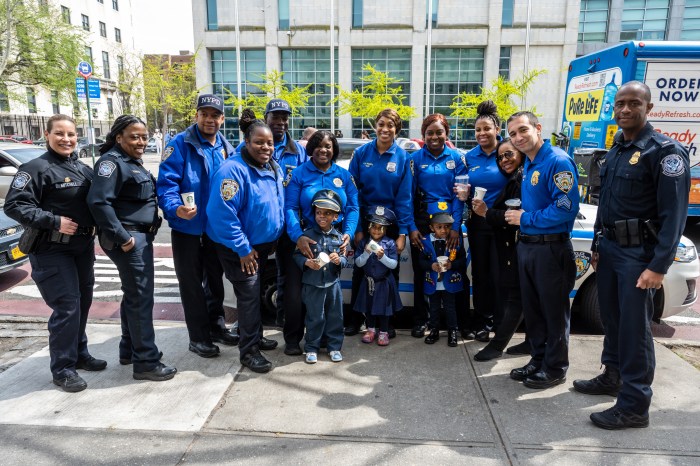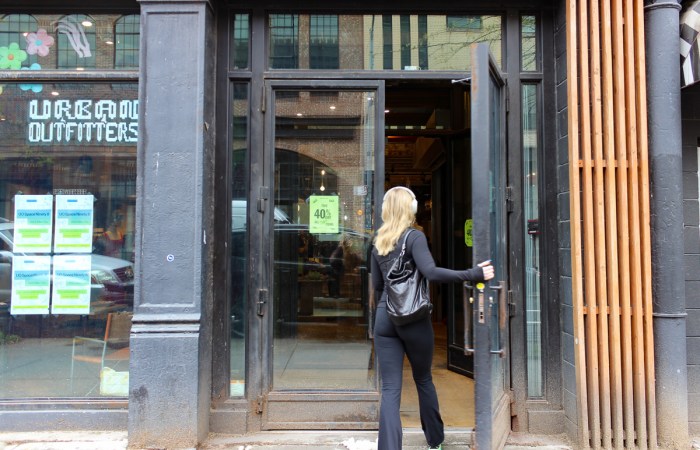
For different reasons, they came to America.
Maria Aristy, 77, went through a traumatic divorce and wanted to put distance — “agua” — between her and the Dominican Republic in 1985.
Constancia Ferreras, 75, joined a boyfriend in 1971.
Angiolina Frias, 63, who like Ferreras is Dominican, wanted to go to school for interior decorating, arriving in 1979.
Carmen Barbosa, 75, left Colombia in 1980. She had seen plenty of port cities as a waitress on a cruise ship, and NYC stood out.
Different forces pushed them to the five boroughs, but they have one thing in common: they stayed.
Now, they’re part of a growing population of immigrant seniors in NYC. According to a new study from the Center for an Urban Future, 49.5 percent of the city’s seniors were born outside of the United States, a high since the end of World War II.
The study found that while the number of seniors nationwide is increasing, in NYC that bump is “driven almost entirely by the increase in immigration since 1965.” Immigrants, in other words, who came to the United States when they were much younger than 65 and have aged here. Those immigrants are now far more likely to have come from Latin America, the Caribbean, Asia or Oceania than Europe. And immigrant seniors are 50 percent more likely to be living in poverty than those born in the United States.
This difference in poverty rates is not always an obvious problem, compounded by isolation, gentrification, and language barriers. Making matters worse, organizations for native born seniors tend to be larger and better funded than those for immigrants, according to the report.
One way that some communities of immigrant seniors have looked to age more comfortably in their adopted homes is through Naturally Occurring Retirement Communities, or NORCS — often state or city-funded programs that provide the resources to allow seniors to age where they are.
I met Aristy, Ferreras, Frias and Barbosa at the resource center for the El Corazón Neighborhood NORC in Washington Heights, which the Center for an Urban Future report identifies as one of the more concentrated neighborhoods for senior immigrant poverty.
The four seniors, who have lived in the neighborhood for decades, often come to the resource center operated by the Isabella Geriatric Center on 169th Street and Broadway — for crocheting classes and even yoga, taught by a nonagenarian, featuring chairs to lean on. Other times, they just stop by the storefront office for the air conditioning or to sit and chat.
They have family members around the globe, but now NYC is home.
Aristy arrived in New York and it was “love at first sight.” Where else can you walk outside and get a cup of coffee just about anywhere? The women agreed, too, that movie theaters were far more plentiful than in the DR, for example.
It wasn’t always easy. Barbosa remembers an early room on 151st Street where she lined up beds for her kids with no room to walk through. They remembered theft and drugs in the area for years after their arrivals, and sometimes gunshots at night.
During those times, Ferreras sometimes dreamed of going back to the countryside outside Santiago for her old age, but today she feels that it isn’t safe enough there.
Now that New York is safer than just about anywhere and much safer than it was, they say they’re glad they remained. That safety comes with a price: rising rents are making it more difficult for people to hang on, with some landlords trying to push tenants out of rent-controlled or relatively inexpensive apartments.
The NORC can help with that kind of problem, connecting seniors to housing attorneys and advising the hundreds of seniors who live in the approximately six-block catchment area. A nurse makes home visits, and the resource center provides bilingual aid with filling out paperwork for food stamps and Medicare.
Beyond the sense of community, that kind of support can be invaluable to prevent isolation and poor health outcomes for aging seniors in the city.
For those like the group at El Corazón, they don’t want to be pushed anywhere else.
Aristy says she spends the morning walking dozens of blocks down to 120th Street for her health, perhaps stopping at a restaurant somewhere for breakfast. Later, there are events and parties at the NORC, sometimes field trips upstate or to Connecticut. She says her daughter tells her that when she retires, she wants to have a life just like that.

















